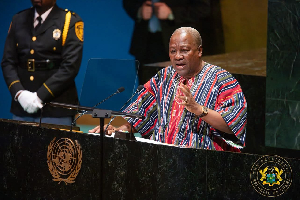As Ghana strives to achieve sustainable economic growth, two innovative concepts are emerging as game-changers: the circular economy and the 24-hour economy. By combining these two powerful approaches, Ghana can unlock unprecedented benefits, drive economic growth, and create a more sustainable future.
Circular Economy
A circular economy is a regenerative system that promotes the reuse and recycling of resources, minimizing waste and reducing environmental degradation.
By adopting circular economy principles, Ghana can (1) reduce waste and pollution, (2) conserve natural resources, (3) foster innovation and entrepreneurship, (4) create new job opportunities, (5) enhance sustainable development and reduce greenhouse gas emissions, and (6) proper resource utilization i.e. material, energy and labor.
Circular economy offers numerous opportunities for Ghana, particularly in the areas of (1) agriculture where its practices can improve crop yields, reduce waste, and promote sustainable farming, (2) manufacturing where adoption reduces waste, increase efficiency, and promote sustainable production, (3) waste management where practices can reduce waste, promote recycling, and create new job opportunities.
24-Hour Economy
A 24-hour economy operates around the clock, providing goods and services at any time. This approach can (1) increase productivity and efficiency, (2) enhance customer convenience and satisfaction, (3) create new business opportunities and revenue streams, (4) improve work-life balance for employees and (5) increase competitiveness and economic growth.
The 24-hour economy offers numerous opportunities for Ghana, particularly in the areas of (1) e-commerce where developing a 24-hour e-commerce platform can increase access to goods and services, promote entrepreneurship, and create new job opportunities, (2) transportation where its implementation improve mobility, increase access to goods and services, and promote economic growth and (3) healthcare, improve healthcare outcomes, increase access to healthcare, and promote sustainable development.
Synergistic Benefits of Combining Circular and 24-hour Economies
A combined circular and 24-hour economies, Ghana can reap numerous synergistic benefits, including (1) increased resource efficiency and reduced waste, (2) enhanced innovation and entrepreneurship, (3) improved customer satisfaction and loyalty, (4) new business opportunities and revenue streams, (5) job creation and improved work-life balance, (6) increased competitiveness and economic growth and (7) circular economy resolving some of the issues and demands of with 24-hr economy.
Challenges and Disadvantages
While the benefits of combining circular and 24-hour economies are substantial, there are also challenges and disadvantages to consider, including (1) initial investment costs for infrastructure and technology, (2) potential disruptions to traditional business models, (3) need for education and training to develop new skills, (4) risk of increased energy consumption and environmental degradation if not managed sustainably.
The Way Forward
To harness the power of circular and 24-hour economies, Ghana must (1) develop and implement policies supporting sustainable development and innovation, (2) invest in infrastructure and technology to enable efficient resource use and waste reduction, (3) educate and train the workforce to develop new skills and adapt to changing business models, (4) encourage entrepreneurship and innovation, particularly in the circular economy sector, (5) foster collaboration and partnerships among stakeholders, including government, private sector, and civil society, (6) need to modify the educational curriculum to address foreseeable gaps while positioning graduate ready to deliver.
By embracing the circular and 24-hour economies, Ghana can unlock a brighter, more sustainable future, drive economic growth, innovation, create more jobs, better utilization of resources including material, energy and labor while minimizing waste, and environmental degradation.
It is imperative that in-depth assessments be conducted to understand the gaps between where we are and going to enable develop strategies for smooth transitions and implementations to maximize the benefits. Below are some suggestions for the individual economies and the combination.
Circular Economy Assessments include (1) material flow analysis: map the flow of materials within the economy to identify areas of inefficiency and opportunities for circularity, (2) waste assessment: evaluate the types and quantities of waste generated to identify opportunities for reduction, reuse, and recycling, (3) resource efficiency assessment: analyze the efficiency of resource use in various sectors to identify areas for improvement and (4) circular business model assessment: evaluate the feasibility of implementing circular business models, such as product-as-a-service or sharing economy platforms.
24-Hour Economy Assessments include (1) demand analysis: Assess the demand for goods and services during non-traditional hours to determine the feasibility of extending operating hours, (2). infrastructure assessment: evaluate the availability and condition of infrastructure, such as transportation systems, energy supply, and communication networks, to support 24-hour operations, (3) workforce assessment: analyze the availability and willingness of workers to adapt to non-traditional work schedules, and (4) technology assessment: evaluate the need for technology upgrades or investments to support 24-hour operations, such as automation, artificial intelligence, or data analytics.
Combined Circular and 24-Hour Economy Assessments include (1) systems thinking assessment: evaluate the interconnectedness of the circular and 24-hour economies to identify potential synergies and trade-offs, (2) stakeholder engagement assessment: assess the level of engagement and buy-in from stakeholders, including businesses, government, and civil society, to ensure a coordinated approach, (3) policy and regulatory assessment: evaluate the policy and regulatory framework to identify potential barriers or opportunities for supporting the combined circular and 24-hour economy and (4) financial assessment: analyze the potential financial benefits and costs of implementing a combined circular and 24-hour economy, including investment requirements and potential returns.
By conducting these assessments, one can gain a comprehensive understanding of the opportunities and challenges associated with implementing a combined circular and 24-hour economic concept and develop a strategic plan to maximize benefits and minimize risks.
Opinions of Tuesday, 7 January 2025
Columnist: Alexander Anim-Mensah















